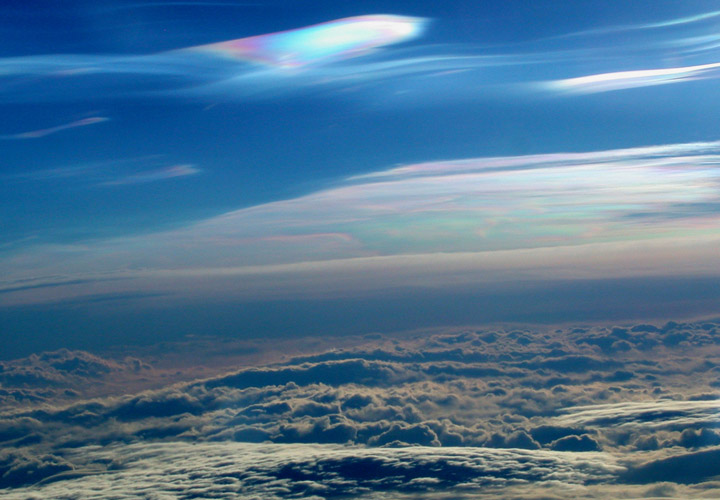Polar Stratospheric Clouds

Paul Newman, GSFC (NASA)
The bright, colorful clouds towards the top of this image are Polar Stratospheric Clouds (PSCs). Notice that the PSCs are far above the darker cirrus clouds at the bottom of the picture. PSCs form in the lower stratosphere at altitudes between 15 and 25 km (about 50,000 to 80,000 feet), far above even the highest clouds in the troposphere. The temperature must be around -78° C (-108° F) for PSCs to form, so these clouds only occur during cold winter months. They are most commonly seen in higher-latitude areas, such as the Arctic, Antarctica, Alaska, and Northern Europe. There are two distinct types of Polar Stratospheric Clouds: Type I clouds are composed of nitric acid and water (and sometimes also sulfuric acid), while Type II clouds, which are also called nacreous clouds, contain only water ice. The droplets and crystals in PSCs diffract sunlight into rainbow hues, so these clouds are often seen as brightly-colored wisps during morning or evening twilight.